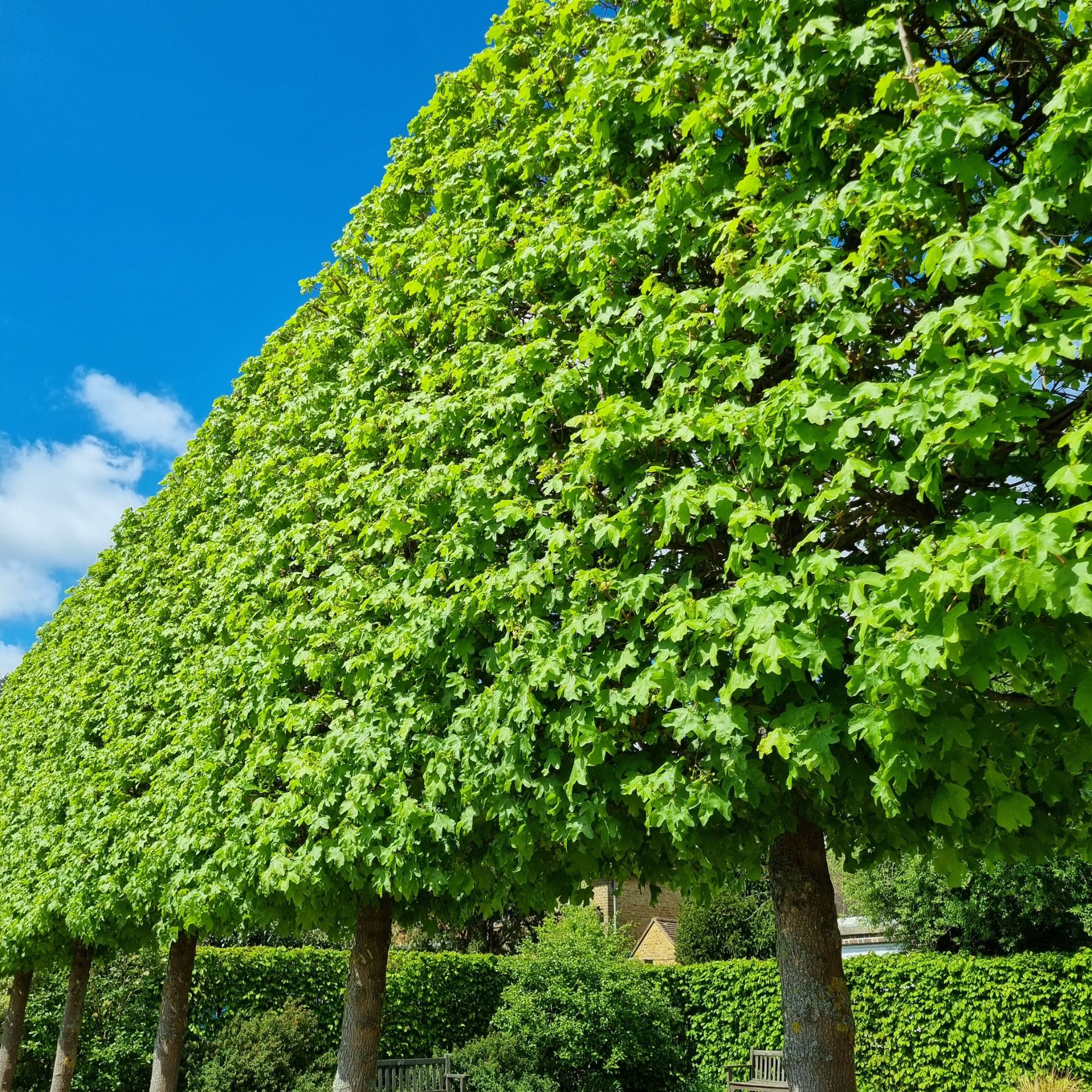
Are pleached trees worth it? It's the question on everyone's minds after David Beckham – as in, yes, Golden Balls/Becks/He Of The Famous Right-Foot himself – unexpectedly shared a video of his ridiculously beautiful garden on Instagram.
In the clip, Beckham smiles into the camera as he wanders around the grounds of his £6 million Cotswolds farmhouse, pursued by some very determined chickens.
While the sure-footed chicks certainly stole the hearts of many, others couldn't help but sigh over all of the gorgeous cottage garden ideas on display in the background, such as the raised garden beds, long rows of freshly planted lavender, and (you guessed it) the stunning pleached trees.
Check it out:
What did we tell you, eh? Absolutely gorgeous.
Are pleached trees worth it?
We know, we know: you want a pleached tree (or five) of your very own now, just like Posh and Becks – but it's worth remembering that they aren't exactly the cheapest of garden additions.

With that in mind, then, we're here to answer the important questions: are pleached trees worth it for lesser mortals without an acreage or two to their names? Are they really one of the best trees for small gardens? And do they make for good privacy trees, too?
Here's everything you need to know.
What are pleached trees?
'Pleached trees are trees that have been carefully trained and pruned to create a flat, elevated canopy,' explains Chandler Harrod, nursery manager for Just Pleachy.
The lower part of the tree is typically clear of branches, creating a tall, slender "clear stem" trunk that raises the canopy above eye level allowing for added interest from underplanted flowers and shrubs,' continues Chandler, noting that these formal trees would make for a beautiful addition to your overflowing list of privacy screening ideas.
'In new-build homes and modern gardens, privacy can be scarce, pleached trees offer an elegant and space-efficient solution, unlike even the very best hedging plants, as these often require more depth, thus gobbling up valuable garden space.'
The best pleached trees
As per the Royal Horticultural Society (RHS), the pleaching method works best on the following trees:
- Lime
- Ash
- Beech
- Photinia Red Robin
- Chestnut
- Laurel
- Hornbeam
- Plane
- Apple
- Pear
- Laburnum
- Wisteria
While you can train your trees yourself (to do this, be sure to select young, whippy plants, plant them in the winter, and tie their shoots to a basic framework), you can also buy them pre-pleached by experts:
'Younger pleached trees are more cost-effective compared to mature pleached trees and are generally lighter/easier to handle,' advises Morris Hankinson, director of Hopes Grove Nurseries.
'They will still develop into a full head of branches with a more mature appearance within a season or two, so they are very much a worthwhile option!' he adds.
How to plant pleached trees
If you're planning on planting your pleached trees yourself (hey, we can't all have a gardener like David Beckham!), Morris says that 'you should plant yours in autumn (ideally October-November), just as you would with any other tree'.
'Take care when positioning your pleached tree, as it will need space to grow over time,' he adds.
While the space your tree needs will depend on its size, a good general rule of thumb is 'to plant them at least a metre away from any building, and about 40cm from your wall/privacy screen'.
'Throughout the growing season, tie young shoots into your trellis to train them,' continues Morris.
'You may also choose to weave them into existing branches on adjacent trees to create a cohesive look. Once established, prune annually to help your pleached tree retain its shape, style and health.'
FAQs
What does a pleached tree mean?
'Pleached trees are trees that are grown straight with a clear, single stem,' explains Morris.
'Their branches are then trained onto bamboo trellises or simple frameworks to give a stunning formal effect. They are often specified by the top garden designers and landscapers, particularly for more formal or modern gardens where these plants give dramatic and immediate structure,' he continues.
'Pleached trees also make a fantastic alternative to high fences/privacy screens.'
Are pleached trees worth it?
While many pleached trees come with an eye-watering price tag, the myriad benefits they provide more than make them worth it.
'If you are looking to define boundaries, create privacy screens, line pathways, or add a touch of greenery to urban gardens where space is limited, then pleached trees could be the perfect solution,' says Chandler.

'Pleached trees offer a beautiful, natural structure that will bring style and elegance for years to come, making them a fantastic investment in your outdoor living space,' he goes on to say.
'And, in addition to their aesthetic appeal, they offer benefits such as noise reduction, air purification, and habitat for wildlife.'
Are pleached trees high maintenance?
While it takes a wee while to get a pleached tree trained, they actually require minimal maintenance; you'll just need to set up a regular watering schedule and be sure to prune and train them a couple of times a year.
So, there we have it: you don't need a garden like David Beckham's to plant pleached trees. And, if you're looking for a small tree that provides privacy, style, and plenty more besides, it seems they are definitely worth it!
Now all that's left to do is decide which pleached tree has stolen your heart, we suppose... good luck!







